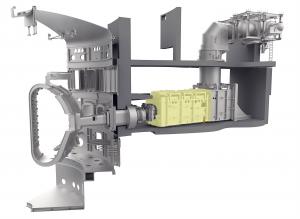Cryopump passes site acceptance tests
Cryopumps, which play an essential role in ITER, are not what one has in mind when picturing a pump. A conventional pump creates negative pressure to suck in fluids such as water or air. Cryopumps, on the other hand, are based on a simple law of physics: when a molecule or an atom encounters an extremely cold surface, they lose the better part of their energy and slow down to near immobility; the colder a surface, the more irresistible is its power to "hold" particles. When high vacuum is needed, cryopumps are indispensable to finalizing the initial pumping done by mechanical devices. ITER will use cryopumps to create high vacuum in the (aptly named) vacuum vessel, the cryostat, the "beam boxes" of the neutral beam injection system, and a few other machine components and systems. In early March, the cryopump for MITICA, a real-size ITER neutral beam injector hosted by Consorzio RFX in Padua, Italy, successfully passed site acceptance tests.
Located inside the injector's "beam box" the cryopump will create the high-vacuum environment indispensable for accelerating and "neutralizing" the energized particles shot into the plasma. Like the torus cryopumps that remove the helium "ashes" from the plasma, the MITICA cryopump will also pump the gas load used in the neutralizing process (see box).
During the accelerating and neutralizing phases, supercritical helium circulating through a dense web of piping will keep the pump's panels at the temperature of 4.5 K (minus 269 °C). However, during the "regeneration" phase, when the gas particles trapped inside the panels need to be released, the same piping will accommodate a flux of gaseous helium at 125 °C—a huge temperature gradient that creates an "accordion effect" in the component's stainless steel circuits.
See a 2022 story on MITICA cryopump manufacturing on the Fusion for Energy website.



